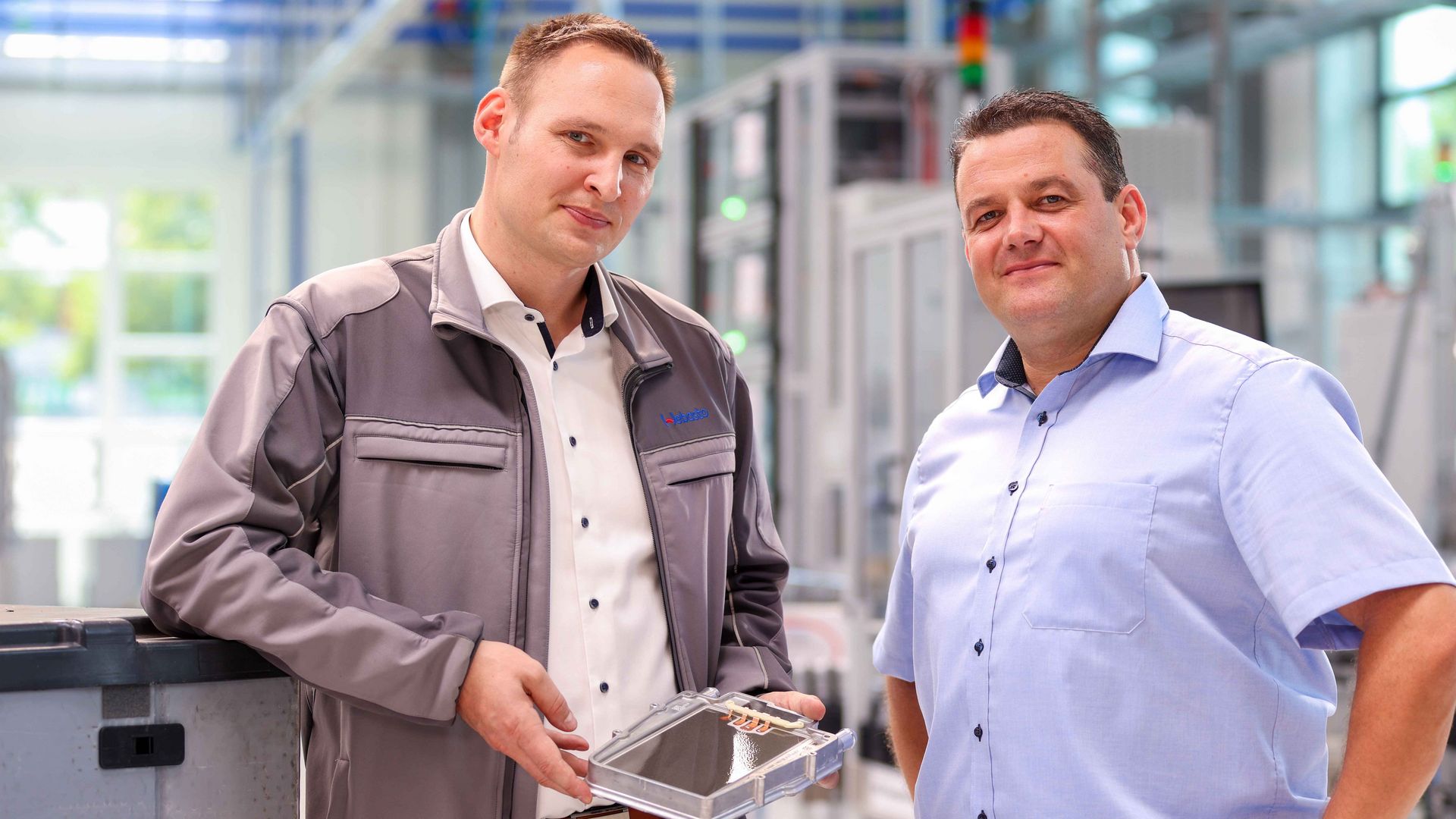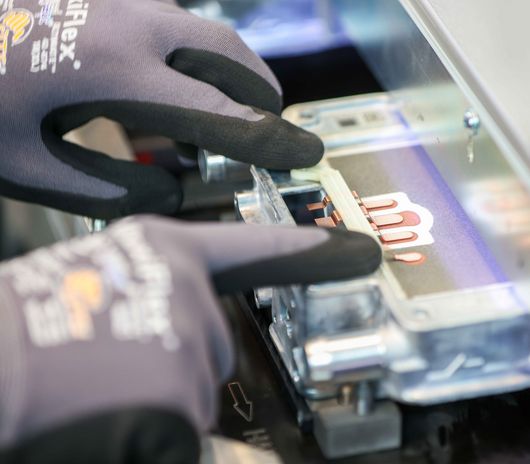Electric cars with perfect temperature control
The German manufacturer Webasto produces and sells components for the automotive industry at over 50 locations worldwide. The Neubrandenburg site is all about heating. In electric cars, the heating process is facilitated through a heat exchanger that maintains a warm and comfortable passenger compartment while ensuring that the battery remains at a constant, optimal operating temperature. The same principle applies to the heating system as to all other components – the smaller and lighter, the better. This is what prompted Webasto to develop its high-voltage heater, which is the slimmest heater on the market thanks to its use of thin-film technology. Jörn Schmalenberg oversees the manufacturing engineering of electric heaters at the Neubrandenburg site. He explains, "We have an exceptionally short reaction time to transfer heat into the water due to the close proximity to the components that carry the cooling water. Due to the unique design, the heat output can be regulated almost continuously – whether at 400 volts or 800 volts. No one has ever achieved this before." Webasto relies on three high-end laser applications from TRUMPF for its heater production.
Three challenges
Gas-tight welding – the heater in electric cars channels fluid through heating lines. "Obviously fluids and high voltage aren't a good combination in an electric car," notes Schmalenberg. "So the aluminum housing must be welded to ensure it is completely gas-tight." However, achieving gas-tightness in aluminum poses a significant challenge. Electron beam welding in a vacuum is too slow and expensive for the mass production of electric cars. However, fast laser welding often results in gas inclusions that impair the tightness.
Precision in contacting copper – copper is essential for ensuring proper current flow in the heater, and, naturally, it needs to be contacted by welding. Copper is reflective, which poses a challenge when using it as a mating part for lasers. However, there is a risk of deep weld seams affecting the underlying layers. "So we must be able to control the welding depth of the laser precisely. This is the point at which traditional infrared lasers reach their limit," Schmalenberg explains.
Structuring conductor tracks – to maintain the heater's thin profile, Webasto opts not to attach conductors but instead inserts them directly into the thin metal layer on the surface. "When structuring, we want clean ablation and precise bending. Preventing the material from melting is crucial to avoid the risk of product defects," Schmalenberg states.
Three solutions
For gas-tight welding, Webasto depends on a fast and powerful disk laser that operates under atmospheric pressure without the need for shielding gas. Schmalenberg explains: "A high laser power ensures a stable keyhole. The underlying principle here is better too much than too little, ensuring that gas pockets do not have time to form in the first place."
Precision in contacting copper is achieved through the use of green laser light from the TruDisk Pulse 421, which exhibits a high degree of absorption in copper. Schmalenberg is delighted with the machine, stating, "With the correct pulse sequence, we can achieve welding depths with extreme repeatability – free of spatter and without the need for shielding gas." Additionally, he emphasizes, "We haven't encountered a single fault with several million components, and overall, everything runs much more smoothly. When it comes to copper welding, we only use green, pulsed systems. Nothing else will do."
When structuring conductor paths, Webasto uses a TruMicro ultrashort pulse laser to structure the conductor tracks directly into the metal. "The focus is on achieving maximum precision when structuring the material, ensuring that the laser does not work too deeply and penetrate the underlying layers. The ultrashort pulse lasers convert the material directly from a solid to a gaseous state, enabling the flat product design that we require," Schmalenberg explains.
Implementation: Three times the power
Schmalenberg emphasizes, "It is crucial for us to get our new products market-ready as quickly as possible." "We are delighted to have the opportunity to test TRUMPF lasers directly," Schmalenberg remarks, referring to the company's a close partnership with research institutes. This approach allows Webasto to consistently uphold the highest standards for its products and manufacturing facility. "For this reason, TRUMPF lasers are often the only viable option."
Forecast
For a company like Webasto, operating in a high-wage country like Germany, achieving a high degree of automation with the most cost-effective production technologies, including lasers, is essential. As is as a high level of innovation, for example through new laser technologies. This cements Webasto's status a sought-after global player. "You can safely assume that nearly every electric car manufactured worldwide will incorporate top-notch electrical engineering components from European manufacturers like us."
Find out more about our products
Date: 2023-12-13











